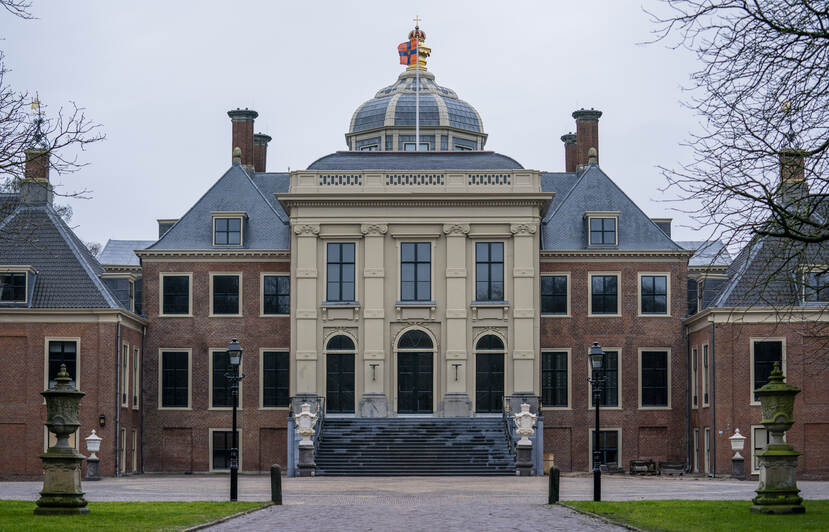Huis ten Bosch Palace is where the King and his family live. In addition to being a royal residence, the palace is also used for entertaining, for example for audiences and receptions.

The reception rooms are found in the main part of the building. The most important of these is the central chamber, known as the Oranjezaal. The King and his family live in the Wassenaar wing. The Hague wing contains guest quarters.
Huis ten Bosch Palace belongs to the state and has been placed at the King’s disposal by Act of Parliament. The palace is situated in the Haagse Bos forest in The Hague.
History of Huis ten Bosch Palace
Construction of Huis ten Bosch Palace started in 1645. During the period of the French occupation, the palace became the property of the nation. Since the proclamation of Willem I as King of the Netherlands in 1815, various members of the royal family have lived at there.
The building suffered serious damage during the Second World War. At the end of the war the palace was uninhabitable. Though the art treasures had been removed and taken to safety, the walls, ceilings and floors had been damaged by bullets, shells and shrapnel.
Between 1950 and 1981 there were two rounds of restorations. Queen Beatrix lived at Huis ten Bosch Palace with her family from 1981. In 2014, after her abdication, she moved to Drakensteyn Castle in Lage Vuursche. The palace was out of use for several years during renovation by the Central Government Real Estate Agency. In 2019 King Willem-Alexander and his family moved there.